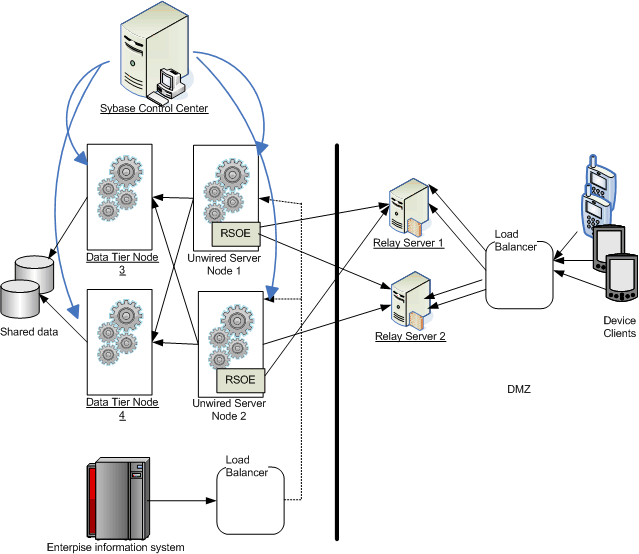The relay server, a required component in a highly-available production environment, adds an extra layer of security and load balancing to the server environment. This server component, which is deployed into the enterprise DMZ, allows secure communications between devices and Unwired Server components across the firewall.
The relay server enables an outbound connection model. The Unwired Platform components make outbound connections into the enterprise DMZ using the secure HTTPS protocol. When using this component, connections from all device clients end within the DMZ of your enterprise, as shown by this architectural diagram:

The relay server also supports load balancing in your Unwired Platform installation by accepting requests from remote clients, and then forwarding the requests to a farm of Unwired Servers. If you are using Afaria, you can configure your Afaria environment to share one relay server.
- For development and testing – the Sybase-hosted relay service, an Internet-hosted relay server that supports an Unwired Server cluster with a two-server limitation.
- For production – the Sybase-installed relay server, which supports Unwired Server with an unlimited number of redundant servers.
The relay server is implemented as a Web extension or a plug-in that runs in a Web server. Unwired Platform supports two Web servers: IIS on Windows, and Apache on Linux. The relay server accepts device client requests and distributes them across a farm of Unwired Servers and Afaria servers. Each individual Unwired Server, Unwired Server embedded component, and Afaria server must run a relay server outbound enabler (RSOE), which establishes a permanent connection to the relay server on behalf of the server or embedded server component.